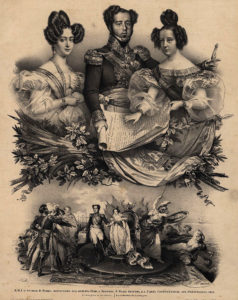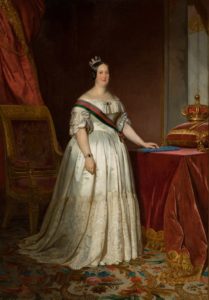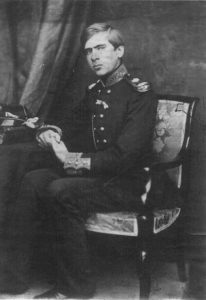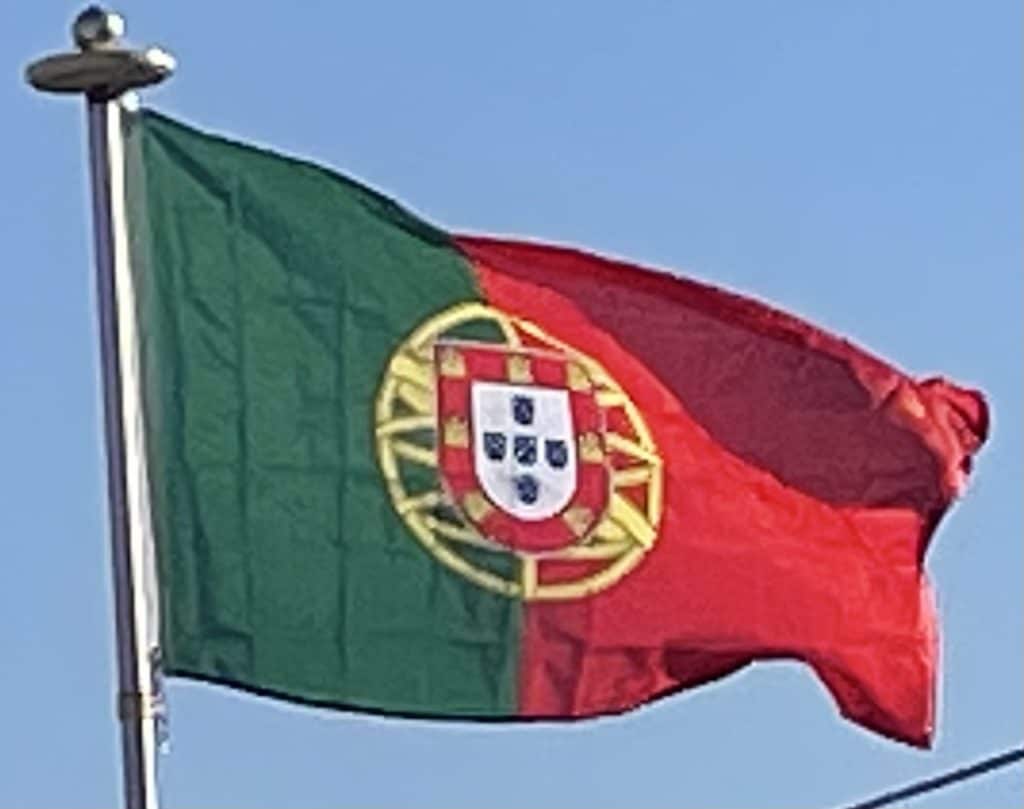
Thus he returned to Portugal but left his son Pedro in charge of Brazil. When the Portuguese Government attempted the following year to return the Kingdom of Brazil to subordinate status, his son Pedro, with the overwhelming support of the Brazilian elites, declared Brazil’s independence from Portugal. Cisplatina (today’s sovereign state of Uruguay), in the south, was one of the last additions to the territory of Brazil under Portuguese rule.
Brazilian independence was recognized in 1825, whereby Emperor Pedro I granted to his father the titular honor of Emperor of Brazil. John VI’s death in 1826 caused serious questions in his succession. Though Pedro was his heir, and reigned briefly as Pedro IV, his status as a Brazilian monarch was seen as an impediment to holding the Portuguese throne by both nations. Pedro abdicated in favor of his daughter, Maria II (Mary II).

However, Pedro’s brother, Infante Miguel, claimed the throne in protest. After a proposal for Miguel and Maria to marry failed, Miguel seized power as King Miguel I, in 1828.

In order to defend his daughter’s rights to the throne, Pedro launched the Liberal Wars to reinstall his daughter and establish a constitutional monarchy in Portugal. The war ended in 1834, with Miguel’s defeat, the promulgation of a constitution, and the reinstatement of Queen Maria II.
Constitutional Monarchy:
Queen Maria II (Mary II) and King Ferdinand II’s son, King Pedro V (Peter V) modernized the country during his short reign (1853–1861). Under his reign, roads, telegraphs, and railways were constructed and improvements in public health advanced.

At the height of European colonialism in the 19th century, Portugal had already lost its territory in South America and all but a few bases in Asia. Luanda, Benguela, Bissau, Lourenço Marques, Porto Amboim and the Island of Mozambique were among the oldest Portuguese-founded port cities in its African territories. During this phase, Portuguese colonialism focused on expanding its outposts in Africa into nation-sized territories to compete with other European powers there.
With the Conference of Berlin of 1884, Portuguese territories in Africa had their borders formally established on request of Portugal in order to protect the centuries-long Portuguese interests in the continent from rivalries enticed by the Scramble for Africa. Portuguese towns and cities in Africa like Nova Lisboa, Sá da Bandeira, Silva Porto, Malanje, Tete, Vila Junqueiro, Vila Pery and Vila Cabral were founded or redeveloped inland during this period and beyond. New coastal towns like Beira, Moçâmedes, Lobito, João Belo, Nacala and Porto Amélia were also founded. Even before the turn of the 20th century, railway tracks as the Benguela railway in Angola, and the Beira railway in Mozambique, started to be built to link coastal areas and selected inland regions.
Other episodes during this period of the Portuguese presence in Africa include the 1890 British Ultimatum. This forced the Portuguese military to retreat from the land between the Portuguese colonies of Mozambique and Angola (most of present-day Zimbabwe and Zambia), which had been claimed by Portugal and included in its “Pink Map“, which clashed with British aspirations to create a Cape to Cairo Railway.
